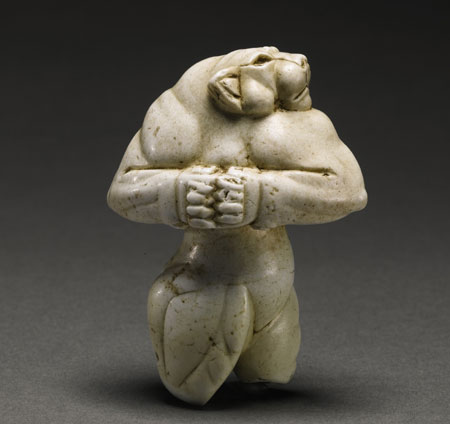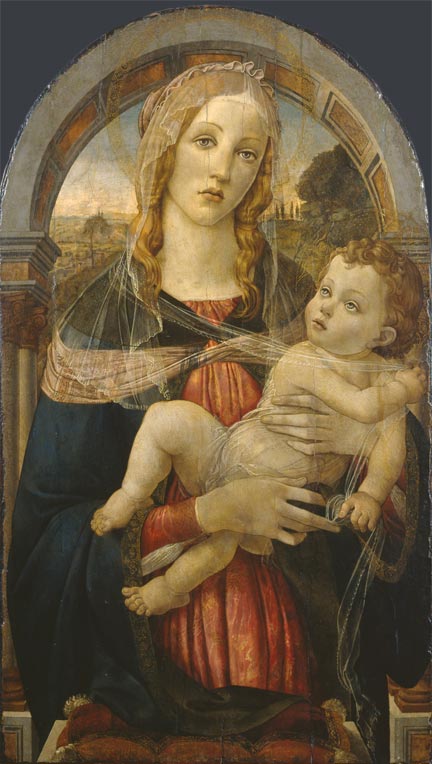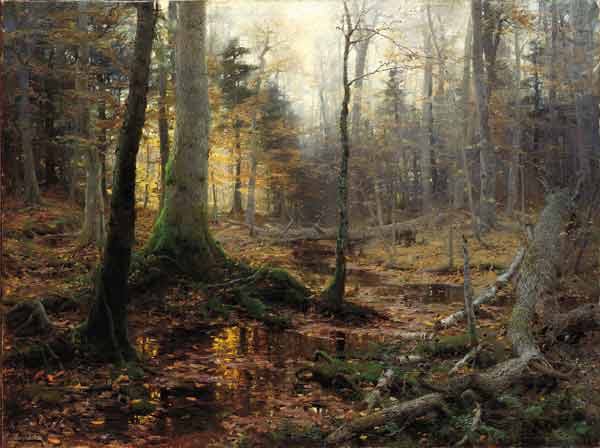On 30 Sep, 2010 With
The highest auction price ever achieved by a sculpture 2007: The highest auction price ever achieved by a sculpture: the 5,000-year old Guennol Lioness, a 3 1/4-inch limestone lion from ancient Mesopotamia. Sold for $57 million. Source: visual-arts-cork.com
Read More
On 29 Sep, 2010 With
His rising fame, his poetic feeling, his great knowledge, and his greater confidence, now induced Fuseli to commence an undertaking worthy of the highest genius—the Shakspeare Gallery. An accidental conversation at the table of the nephew of Alderman Boydell, started, as it is said, the idea; and West, Romney, and Hayley shared with Fuseli in the honor. But to the mind of the latter, such a scheme had been long present; it dawned on his fancy in Rome, even as he lay on his back marveling in the Sistine, and he saw in imagination a long and shadowy succession of pictures. He figured to himself a magnificent temple, and filled it, as the illustrious artists of Italy did the Sistine,…
Read More
On 28 Sep, 2010 With
The Macchiaioli were a group of Italian painters from Tuscany, active in the second half of the nineteenth century, who, breaking with the antiquated conventions taught by the Italian academies of art, painted outdoors in order to capture natural light, shade, and colour. The Macchiaioli were forerunners of the Impressionists who, beginning in the 1860s, would pursue similar aims in France. The most notable artists of this movement were Giovanni Fattori, Silvestro Lega and Telemaco Signorini. The movement The movement grew from a small group of artists, many of whom had been revolutionaries in the uprisings of 1848. The artists met at the Caffè Michelangiolo in Florence throughout the 1850s to discuss art and politics. These idealistic young men, dissatisfied with the art of the academies, shared a wish…
Read More
On 27 Sep, 2010 With
Genuine fakes by Ben East Fakes and forgeries were once the embarrassment of the art world. No august gallery, no famous auction house is entirely free from the stain of a costly error of provenance. It was ever thus: one of the first acquisitions by the National Gallery in London was proudly unveiled in 1847 as a major painting by the 16th-century artist Hans Holbein. It was, they said, a purchase of “national significance”. But within weeks, doubt was cast on its authenticity, the attribution to Holbein was scrubbed and the gallery’s first director, Sir Charles Lock, resigned. Two centuries on, you’d forgive Lock a wry smile. Duped galleries and experts can now feel reassured that even if they do…
Read More
On 26 Sep, 2010 With
This picture was a work of far higher order than his “Nightmare,” although the latter caught the[Pg 67] public fancy most. It is distinguished by singular power, full of feeling and terror. The desolate old man is seated on the ground, and his whole frame seems inspired with a presentiment of the coming vengeance of heaven. His daughters are clasping him wildly, and the sky seems mustering the thunder and fire in which the tragic bard has made him disappear. “Pray, sir, what is that old man afraid of?” said some one to Fuseli, when the picture was exhibited. “Afraid, sir,” exclaimed the painter, “why, afraid of going to hell!”
Read More
On 25 Sep, 2010 With
The Vienna School of Fantastic Realism is a group of artists founded in Vienna in 1946. It includes Ernst Fuchs, Arik Brauer, Rudolf Hausner, Wolfgang Hutter, Anton Lehmden andFritz Janschka, all students of Professor Albert Paris Gütersloh at the Vienna Academy of Fine Arts. It was Gütersloh’s emphasis on the techniques of the Old Masters that gave the fantastic realist painters a grounding in realism (expressed with a clarity and detail some have compared to early Flemish painting) combined with religious and esoteric symbolism. Books 1974 – Die Wiener Schule des Phantastischen Realisumus (C. Bertelsmann) (Johann Muschik) (German language) 2005 – Fantastic Art (Taschen)(Schurian, Prof. Dr. Walter) (English edition) 2003 – Die Phantasten – Die Wiener Schule des Phantastischen Realisums (Stdtgemeinde Tulln) (German Language) 2007 – Metamorphosis (beinArt) 2008 – Phantastischer Realismus (Belvedere, Wien)…
Read More
On 24 Sep, 2010 With
Anti-art is a loosely-used term applied to an array of concepts and attitudes that reject prior definitions of art and question art in general. Anti-art tends to conduct this questioning and rejection from the vantage point of art. The term is associated with the Dada movement and is generally accepted as attributable to Marcel Duchamp pre-World War I, when he began to use found objects as art. An expression of anti-art can take the form of art or not. In general, anti-art rejects only some aspects of art. Depending on the case, “anti-artworks” may reject conventional artistic standards. Anti-artworks may also reject the art market, and high art. Anti-artworks may reject individualism in art. Anti-art may reject “universality” as an accepted factor in art,…
Read More
On 23 Sep, 2010 With
Naturalism Naturalism in art refers to the depiction of realistic objects in a natural setting. The Realism movement of the 19th century advocated naturalism in reaction to the stylized and idealized depictions of subjects in Romanticism, but many painters have adopted a similar approach over the centuries. One example of Naturalism is the artwork of American artist William Bliss Baker, whose landscape paintings are considered some of the best examples of the naturalist movement. Another example is the French Albert Charpin, from the Barbizon School,with his paintings of sheep in their natural settings. An important part of the naturalist movement was its Darwinian perspective of life and its view of the futility of man up against the forces of nature. Naturalism began in the…
Read More
On 22 Sep, 2010 With
Eric Hebborn (1934- 11 January 1996) was a British painter and art forger and later an author. Early life Eric Hebborn was born in the London suburb of South Kensington to a Cockney family in 1934, although his mother was a gipsy. According to his autobiography, his mother beat him constantly as a child. At the age of eight, he states that he set fire to his school and was sent to Longmoor reformatory in Harold Wood, although his sister Rosemary disputes this. Teachers encouraged his painting talent and he became connected to the Maldon Art Club, where he first exhibited at the age of 15. Hebborn attended Chelmsford Art School and Walthamstow Art School before attending the Royal Academy. He flourished at the Academy, winning the Hacker Portrait prize…
Read More
On 21 Sep, 2010 With
A dandy (also known as a beau and gallant) is a man who places particular importance upon physical appearance, refined language, and leisurely hobbies, pursued with the appearance of nonchalance in a cult of Self. Historically, especially in late 18th- and early 19th-century Britain, a dandy, who was self-made, often strove to imitate an aristocratic style of life despite coming from a middle-class background. Though previous manifestations, of Alcibiades, and of the petit-maître and the muscadin have been noted by John C. Prevost, the modern practice of dandyism first appeared in the revolutionary 1790s, both in London and in Paris. The dandy cultivated skeptical reserve, yet to such extremes that the novelist George Meredith, himself no dandy, once defined “cynicism” as “intellectual dandyism”; nevertheless, the Scarlet Pimpernel is one of the great dandies of…
Read More




